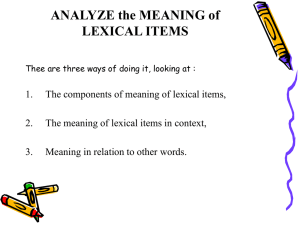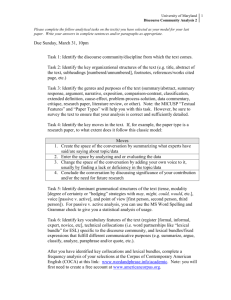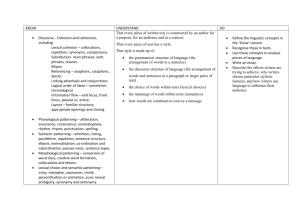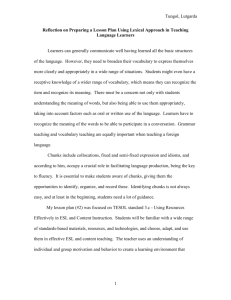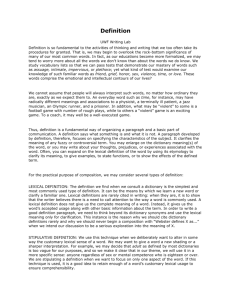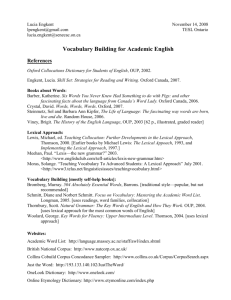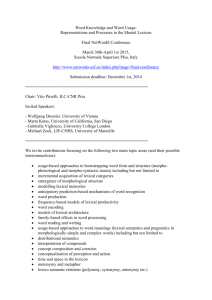product and vocabulary
advertisement
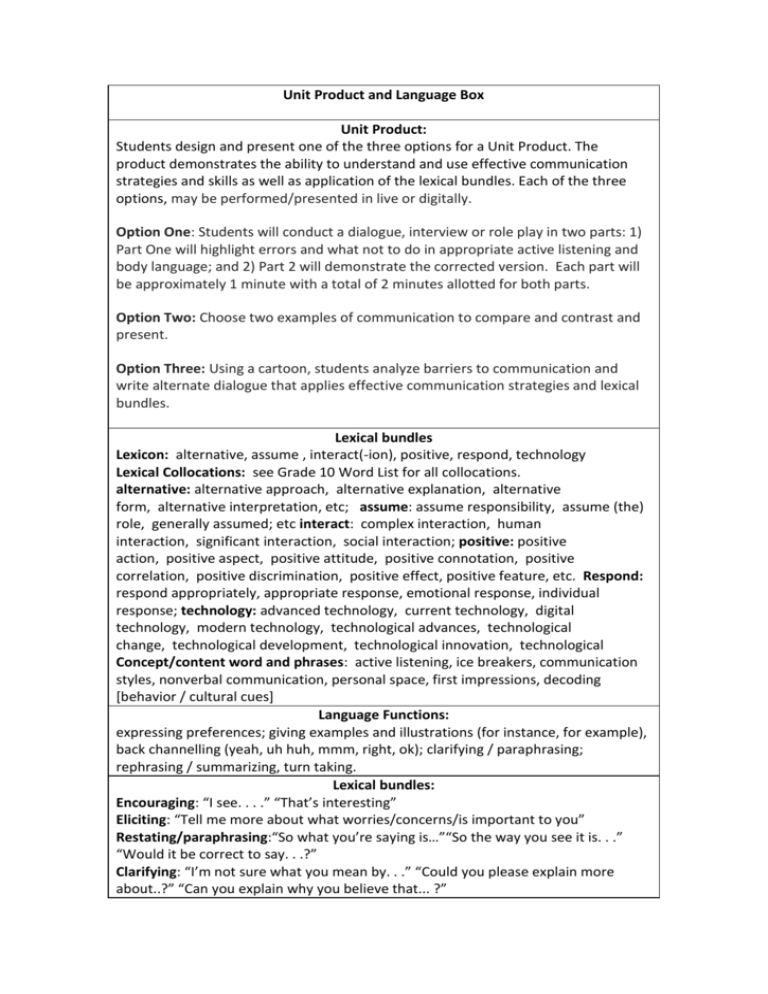
Unit Product and Language Box Unit Product: Students design and present one of the three options for a Unit Product. The product demonstrates the ability to understand and use effective communication strategies and skills as well as application of the lexical bundles. Each of the three options, may be performed/presented in live or digitally. Option One: Students will conduct a dialogue, interview or role play in two parts: 1) Part One will highlight errors and what not to do in appropriate active listening and body language; and 2) Part 2 will demonstrate the corrected version. Each part will be approximately 1 minute with a total of 2 minutes allotted for both parts. Option Two: Choose two examples of communication to compare and contrast and present. Option Three: Using a cartoon, students analyze barriers to communication and write alternate dialogue that applies effective communication strategies and lexical bundles. Lexical bundles Lexicon: alternative, assume , interact(-ion), positive, respond, technology Lexical Collocations: see Grade 10 Word List for all collocations. alternative: alternative approach, alternative explanation, alternative form, alternative interpretation, etc; assume: assume responsibility, assume (the) role, generally assumed; etc interact: complex interaction, human interaction, significant interaction, social interaction; positive: positive action, positive aspect, positive attitude, positive connotation, positive correlation, positive discrimination, positive effect, positive feature, etc. Respond: respond appropriately, appropriate response, emotional response, individual response; technology: advanced technology, current technology, digital technology, modern technology, technological advances, technological change, technological development, technological innovation, technological Concept/content word and phrases: active listening, ice breakers, communication styles, nonverbal communication, personal space, first impressions, decoding [behavior / cultural cues] Language Functions: expressing preferences; giving examples and illustrations (for instance, for example), back channelling (yeah, uh huh, mmm, right, ok); clarifying / paraphrasing; rephrasing / summarizing, turn taking. Lexical bundles: Encouraging: “I see. . . .” “That’s interesting” Eliciting: “Tell me more about what worries/concerns/is important to you” Restating/paraphrasing:“So what you’re saying is…”“So the way you see it is. . .” “Would it be correct to say. . .?” Clarifying: “I’m not sure what you mean by. . .” “Could you please explain more about..?” “Can you explain why you believe that... ?” Empathizing:“I can see why you feel that…” “I can understand how you see it that way.” Summarizing: “These seem to be the key ideas you have expressed. . .” “So your view of this whole situation is…” As I understand it, you are concerns are…” Reframing: “Let’s think about how we could change the situation…”“Since we both value.” “let’s see if we can…” “I’m sorry you feel that way, but I’m glad you raised the issue. Let’s see how we can work together to…”
